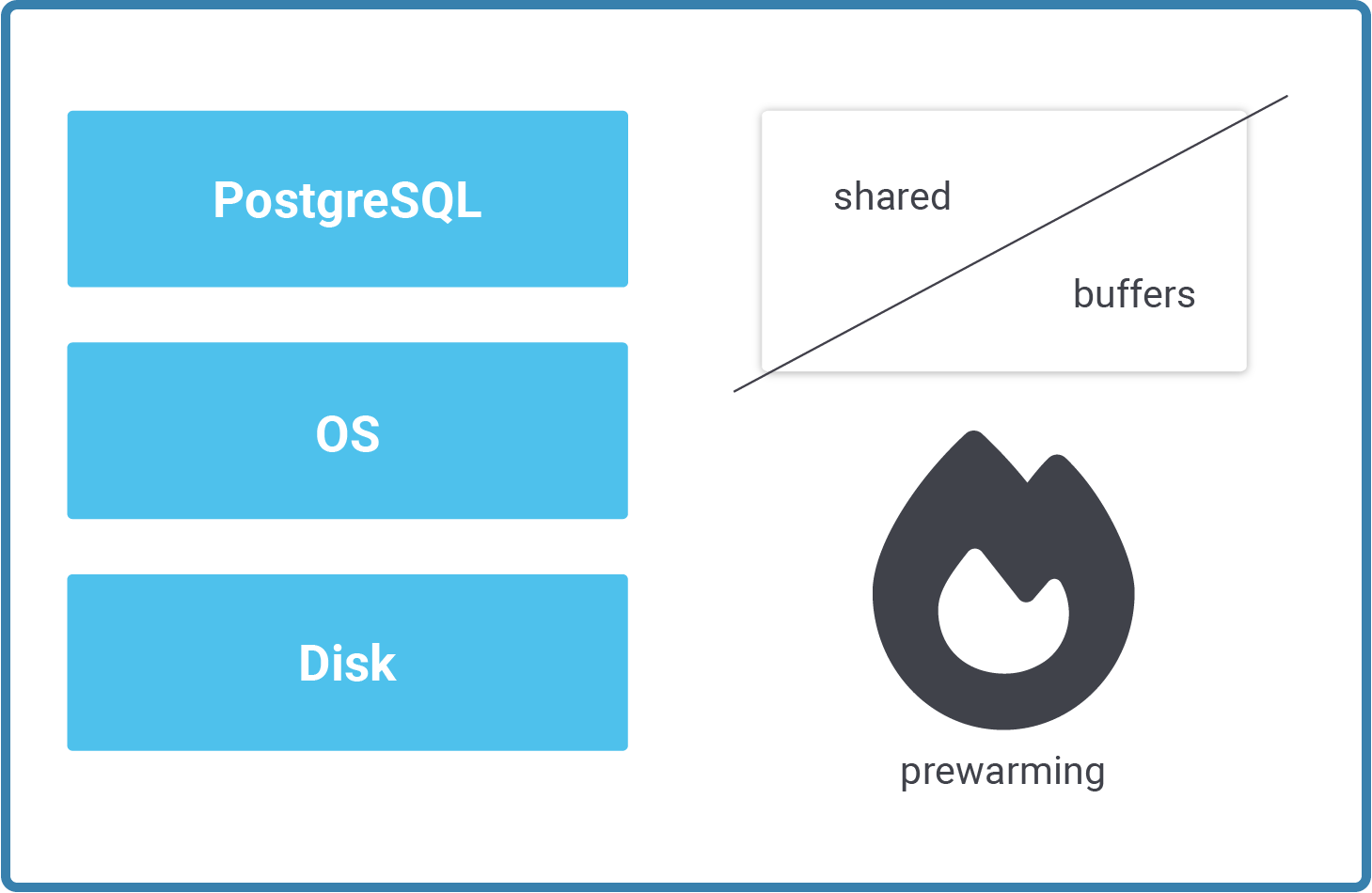PostgreSQL uses shared_buffers to cache blocks in memory. The idea is to reduce
disk I/O and to speed up the database in the most efficient way
possible. During normal operations your database cache will be pretty useful and
ensure good response times. However, what happens if your database instance is
restarted - for whatever reason? Your PostgreSQL database performance will suffer
until your I/O caches have filled up again. This takes some time and it can
be pretty damaging to your query response times.
Table of Contents
Fortunately, there are ways in PostgreSQL to fix the problem. pg_prewarm is a
module which allows you to automatically prewarm your caches after a database
failure or a simple restart. The pg_prewarm module is part of the PostgreSQL
contrib package and is usually available on your server by default.
There is no need to install additional third party software. PostgreSQL has all
you need by default.

Basically, pg_prewarm can be used in two ways:
Let us take a look at both options and see how the module works in detail. In general automatic pre-warming is, in my judgement, the better way to preload caches - but in some cases, it can also make sense to just warm caches manually (usually for testing purposes).
Prewarming the cache manually is pretty simple. The following section explains how the process works in general.
The first thing to do is to enable the pg_prewarm extension in your database:
|
1 2 |
test=# CREATE EXTENSION pg_prewarm; CREATE EXTENSION |
To show how a table can be preloaded, I will first create a table and put it into
the cache:
|
1 2 3 4 5 6 7 8 |
test=# CREATE TABLE t_test AS SELECT * FROM generate_series(1, 1000000) AS id; SELECT 1000000 test=# SELECT * FROM pg_prewarm('public.t_test'); pg_prewarm ------------ 4425 (1 row) |
All you have to do is to call the pg_prewarm function and pass the name of the
desired table to the function. In my example, 4425 pages have been read and put
into the cache.
4425 blocks translates to roughly 35 MB:
|
1 2 3 4 5 |
test=# SELECT pg_size_pretty(pg_relation_size('t_test')); pg_size_pretty ---------------- 35 MB (1 row) |
Calling pg_prewarm with one parameter is the easiest way to get started.
However, the module can do a lot more, as shown in the next listing:
|
1 2 3 4 5 6 7 8 9 10 11 12 13 14 |
test=# x Expanded display is on. test=# df *pg_prewarm* List of functions -[ RECORD 1 ] ---------------------+--------------------------------------------- Schema | public Name | pg_prewarm Result data type | bigint Argument data types | regclass, mode text DEFAULT 'buffer'::text, fork text DEFAULT 'main'::text, first_block bigint DEFAULT NULL::bigint, last_block bigint DEFAULT NULL::bigint Type | func |
In addition to passing the name of the object you want to cache to the function,
you can also tell PostgreSQL which part of the table you want to cache. The
"relation fork" defines whether you want the real data file, the VM (Visibility
Map) or the FSM (Free Space Map). Usually, caching the main table is just fine.
You can also tell PostgreSQL to cache individual blocks. While this is flexible,
it is usually not what you want to do manually.
In most cases, people might want pg_prewarm to take care of caching automatically
on startup. The way to achieve this is to add pg_prewarm to
shared_preload_libraries and to restart the database server. The following
example shows how to configure shared_preload_libraries in postgresql.conf:
shared_preload_libraries = 'pg_stat_statements, pg_prewarm'
After the server has restarted you should be able to see the "autoprewarm
master" process which is in charge of starting up things for you.
|
1 2 3 4 5 6 7 8 9 |
80259 ? Ss 0:00 /usr/pgsql-11/bin/postmaster -D /var/lib/pgsql/11/data/ 80260 ? Ss 0:00 _ postgres: logger 80262 ? Ss 0:00 _ postgres: checkpointer 80263 ? Ss 0:00 _ postgres: background writer 80264 ? Ss 0:00 _ postgres: walwriter 80265 ? Ss 0:00 _ postgres: autovacuum launcher 80266 ? Ss 0:00 _ postgres: stats collector 80267 ? Ss 0:00 _ postgres: autoprewarm master 80268 ? Ss 0:00 _ postgres: logical replication launcher |
By default, pg_prewarm will store a list of blocks which are currently in memory
on disk. After a crash or a restart, pg_prewarm will automatically restore the
cache as it was when the file was last exported.
In general, pg_prewarm makes most sense if your database and your RAM are really
really large (XXX GB or more). In such cases, the difference between cached
and uncached data will be greatest and users will suffer the most if
performance is bad.
If you want to learn more about performance and database tuning in general,
consider checking out my post about how to track down slow or time consuming
queries. You might also be interested in taking a look at
http://pgconfigurator.cybertec.at, which is a free website to help you with
database configuration.
Leave a Reply